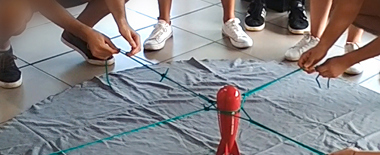Take a look at our articles or search by a particular resource type or area of interest. Can't find what you're looking for? Get in touch.

Does your team play by the rules?
There’s a crucial difference between breaking the rules recklessly and in defiance of authority, and listening to independent thinkers who can help ensure the long-term success of the organisation.

Resilience: solo endeavour or team affair?
A diverse and flexible team builds individual and team resilience. For this to work, we need to understand the resources available to them and to be able to call on those resources effectively.

A Belbin Team Role Guide to Skydiving
With a member of the Belbin team gearing up for their first charity skydive, it got us thinking about how different Team Roles might approach a skydive.

Belbin and Entrepreneurship
We analysed the Team Role profiles of growing SMEs and our findings offer insights into the behaviours needed throughout the life cycle of a successful start-up.

Belbin and Listening Styles
Aligning listening styles and Belbin Team Roles isn’t an exact science, but we’ve provided some ideas and pointers. Read more here.

How Belbin transformed a cohort of chemical engineers at the University of the Basque Country
The Belbin scheme is relevant and meaningful to the undergraduate group projects and a useful tool to guide students towards their future employability.

Belbin for Sales Teams
Sales teams are instrumental in establishing successful strategic relationships. Belbin Team Roles can help make them more effective.

Managing a hybrid team
Hybrid working models present additional challenges for managers. Here are our top tips for managing virtual teams using Belbin Team Roles.

Belbin, self-reporting and the dangers of the echo chamber
Some people are wary of 'psychometric' tests. They fear being pigeon-holed or that the results will reflect negatively on them.

Using Belbin with the divergence-and-convergence collaboration method
Discover how to use Belbin Team Roles with the divergence-convergence model, for more effective problem-solving.

Building better teams with LEGO bricks Webinar
LEGO® SERIOUS PLAY® and Belbin® Team Roles is a wonderful combination.

Managing Difficult Relationships at Work
Managing difficult relationships at workOften relationships at work fail quietly. But hidden conflicts and 'silent fails' in relationships can be just as harmful to the team as palms on desks and…